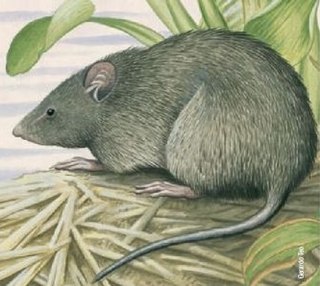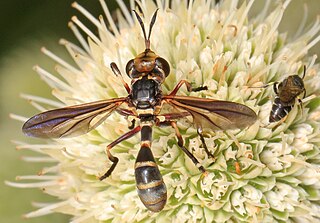
Marcus Aurelius Antoninus was Roman emperor from 161 to 180 and a Stoic philosopher. He was the last of the rulers known as the Five Good Emperors, and the last emperor of the Pax Romana, an age of relative peace and stability for the Roman Empire. He served as Roman consul in 140, 145, and 161.

The Elachistidae are a family of small moths in the superfamily Gelechioidea. Some authors lump about 3,300 species in eight subfamilies here, but this arrangement almost certainly results in a massively paraphyletic and completely unnatural assemblage, united merely by symplesiomorphies retained from the first gelechioid moths.

The Conopidae, usually known as the thick-headed flies, are a family of flies within the Brachycera suborder of Diptera, and the sole member of the superfamily Conopoidea. Flies of the family Conopidae are distributed worldwide in all the biogeographic realms except for the poles and many of the Pacific islands. About 800 species in 47 genera are described worldwide, about 70 of which are found in North America. The majority of conopids are black and yellow, or black and white, and often strikingly resemble wasps, bees, or flies of the family Syrphidae, themselves notable bee mimics. A conopid is most frequently found at flowers, feeding on nectar with its proboscis, which is often long.

The fossorial giant rat is a species of rodent in the family Cricetidae. It is found in Argentina and Brazil but was determined extinct following a recent assessment of the conservation status of Sigmodontine rodents. Its natural habitat is assumed to be dry savanna, but there have been no ecological details reported.

Carcharias is a genus of sand tiger sharks belonging to the family Odontaspididae.
Physoconops bulbirostris is a species in the family Conopidae, in the order Diptera ("flies").

Physoconops is a genus of thick-headed flies in the family Conopidae. There are about 13 described species in Physoconops.
Physoconops brachyrhynchus is a species of thick-headed fly in the family Conopidae.
Physoconops townsendi is a species of thick-headed fly in the family Conopidae.

Physoconops excisus is a species of thick-headed fly in the family Conopidae.
Physoconops obscuripennis is a species of thick-headed fly in the family Conopidae.
Physoconops discalis is a species of thick-headed fly in the family Conopidae.
Physoconops sylvosus is a species of thick-headed fly in the family Conopidae.
Gozmanyina majestus is a species of cosmochthoniid in the family Cosmochthoniidae.
Phloeosinus pini is a species of crenulate bark beetle in the family Curculionidae. It is found in North America.
Physoconops floridanus, the Florida physoconops, is a species of thick-headed fly in the family Conopidae.
Physoconops gracilis is a species of thick-headed fly in the family Conopidae.
Physoconops nigrimanus is a species of thick-headed fly in the family Conopidae.
Physoconops analis is a species of thick-headed fly in the family Conopidae.
Natalimyza is a genus of flies placed in the family Natalimyzidae and known as African grass flies. There are about 30 species in Africa which are found mainly in grasslands where their larvae are thought to feed on decaying plant material. They are small yellow to brown and appear like flies in the families Chyromyidae or Opomyzidae, but differentiated by bristles on the head, having four fronto-orbital bristles.






